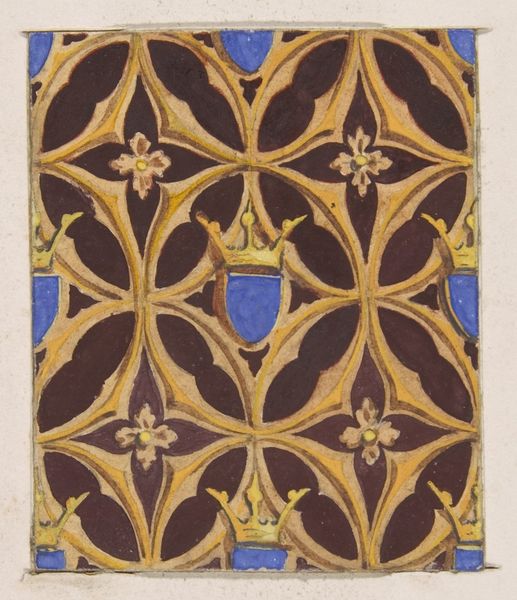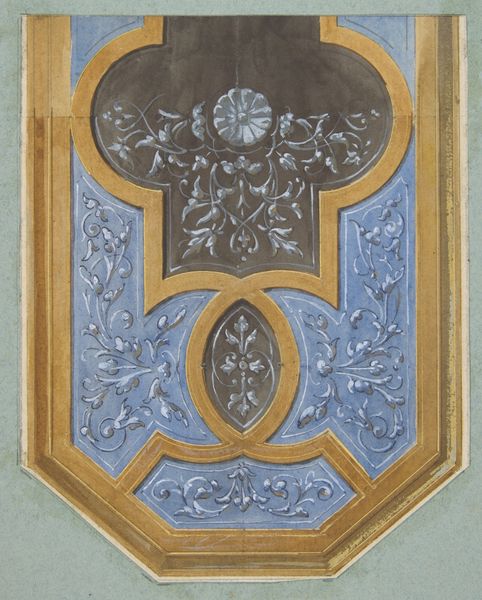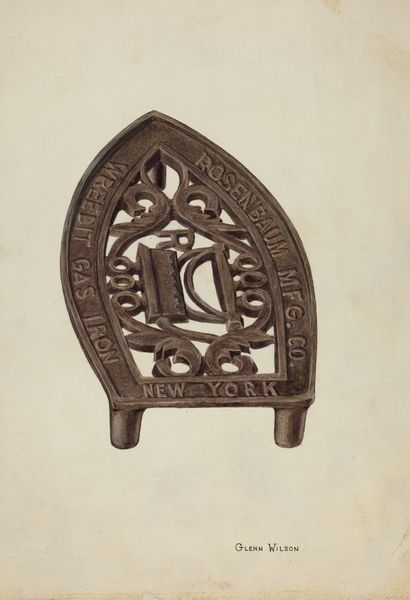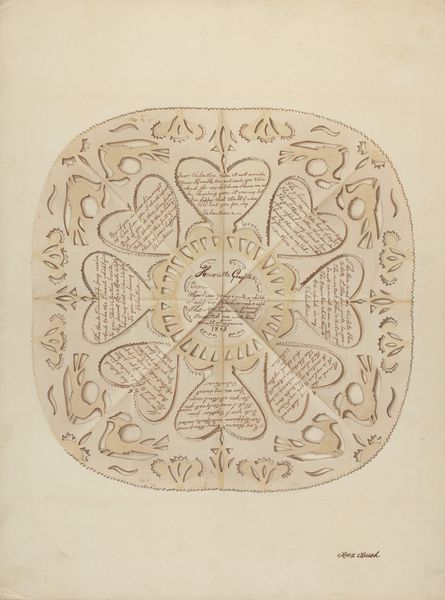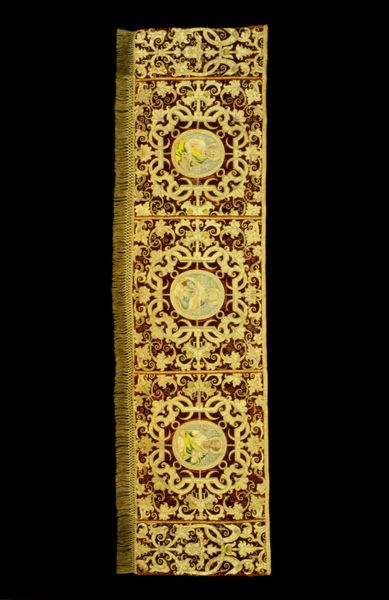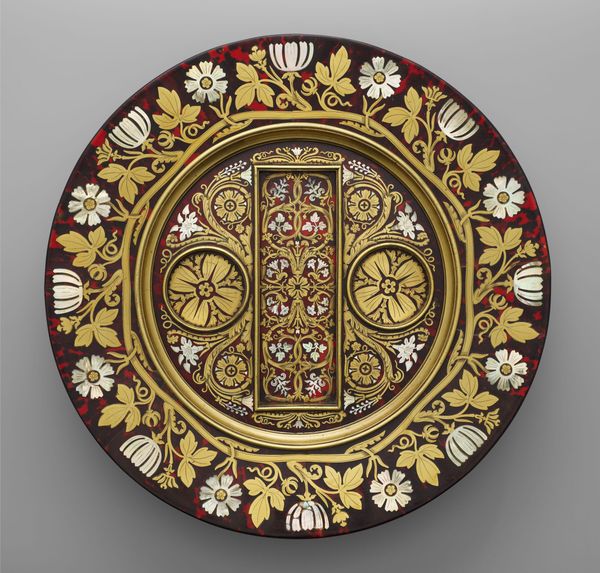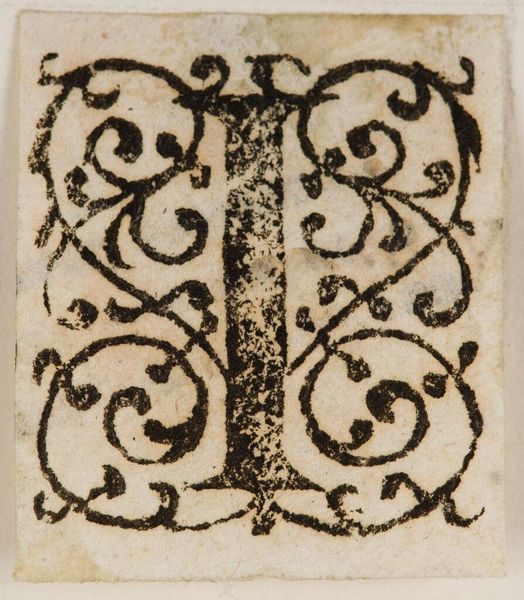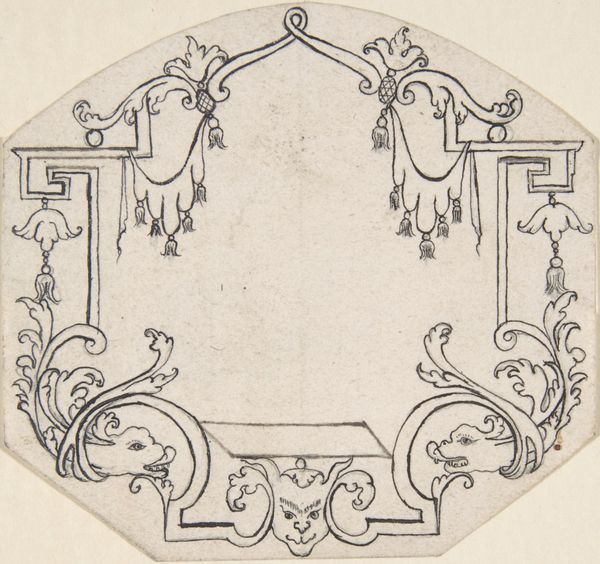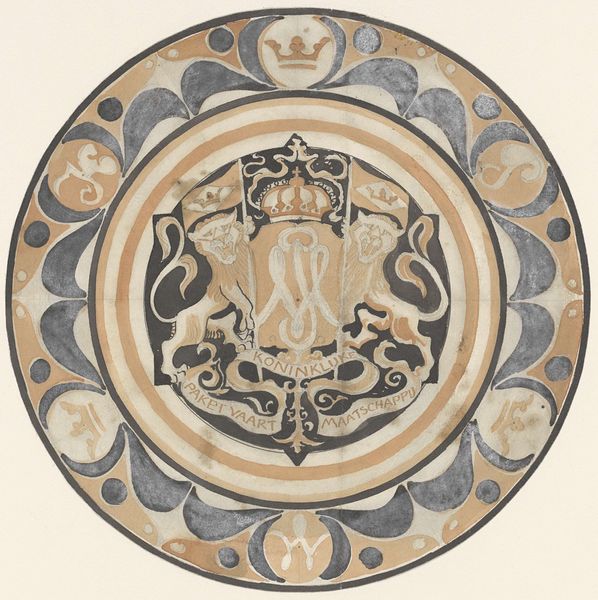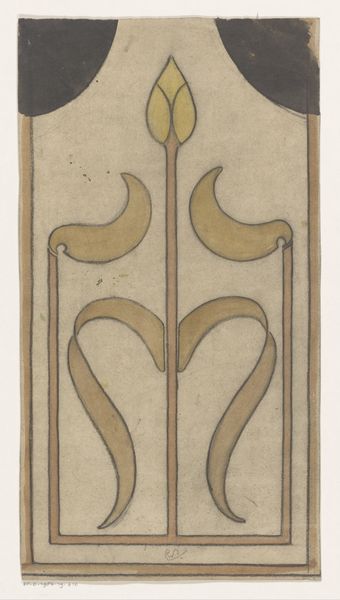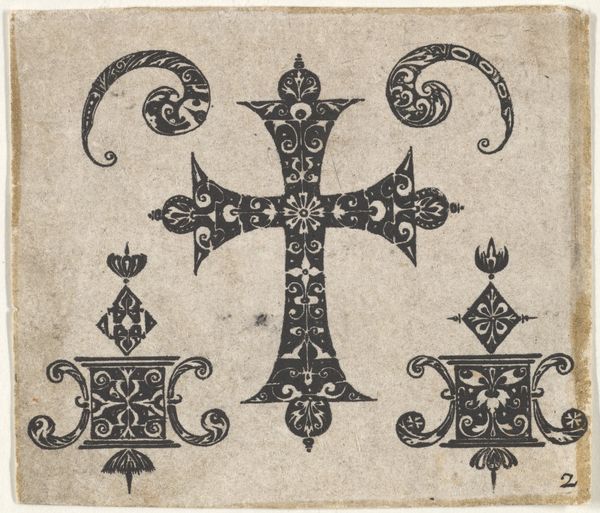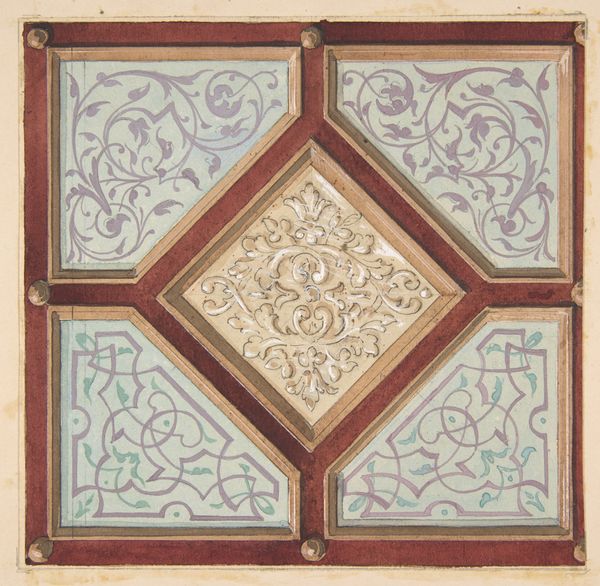
Myddelton Biddulph Armorial Medallion c. 1846
0:00
0:00
Dimensions: 42.2 × 36.3 cm (16 5/8 × 14 1/4 in.)
Copyright: Public Domain
Editor: So this piece is called "Myddelton Biddulph Armorial Medallion," created around 1846. The artist was Augustus Welby Northmore Pugin, and it’s a textile piece. The immediate feeling is one of, I don’t know, like old-world opulence? It looks like something that might have been hanging in a castle somewhere. What stories do you see woven into it? Curator: The intertwining initials are quite telling, aren't they? A stylized "B" and "M," embraced by oak leaves. Oak has long stood for strength, endurance, and nobility, reflecting, perhaps, aspirations to those virtues by the families linked within this union. Doesn’t it make you wonder what they wished to project? Editor: Absolutely! I also wonder, with those bold initials so prominently displayed, was this for public or private viewing? Was it a declaration, or something more intimate? Curator: Possibly both! Armorial bearings have historically performed dual roles. They asserted family identity and lineage to the outside world while reinforcing kinship and shared heritage within the family itself. In a world where status was visually proclaimed, textiles like this served as powerful statements of belonging and legacy. Do you see how the repetition and stylized shapes contribute to its visual impact? Editor: Definitely, there’s a rhythm. The more you look, the more the repeating elements kind of speak to each other across the medallion. Were these emblems commonplace then? Curator: While not universally owned, such displays of heraldry were highly visible amongst certain social strata. They were potent symbols operating on both conscious and unconscious levels. By seeing these images regularly, what values, do you imagine, might individuals have internalized? Editor: Probably things like tradition, ancestry, and a certain sense of importance, for sure. It’s a fascinating glimpse into what those symbols represented then and how they shaped people's views of themselves. Curator: Indeed, it demonstrates how profoundly images speak across generations. It’s more than just decoration, wouldn't you agree? It’s history rendered in thread and symbolism. Editor: It is! This medallion makes me rethink what a “portrait” can be. It’s not just a face; it’s an entire story, meticulously woven.
Comments
No comments
Be the first to comment and join the conversation on the ultimate creative platform.

